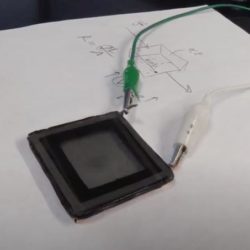Nanogenerator ‘scavenges’ power from their surroundings
Imagine a mobile phone charger that doesn’t need a wireless or mains power source. Or a pacemaker with inbuilt organic energy sources within the human body. Australian researchers led by Flinders University are picking up the challenge of ‘scavenging’ invisible power from low-frequency vibrations in the surrounding environment, including wind, air or even contact-separation energy Read more about Nanogenerator ‘scavenges’ power from their surroundings[…]


